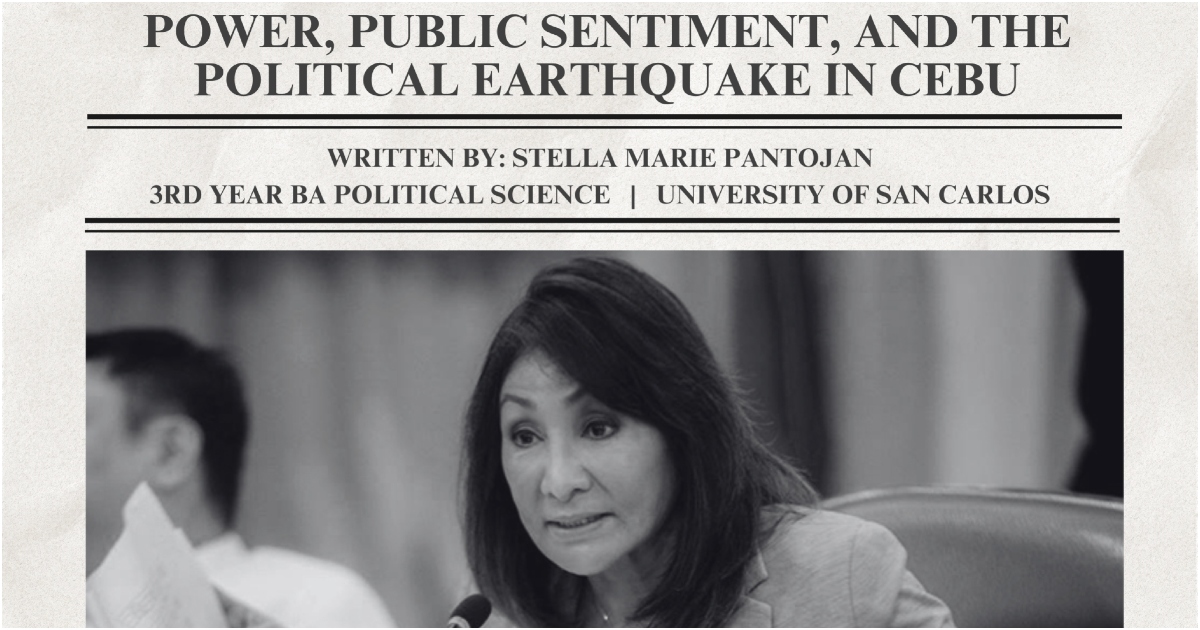A Political Upset Years in the Making
Gwendolyn Garcia was the main influence in Cebu politics for over two decades. Since 2004, she has been known as the “Iron Lady” because she never lost, besting the likes of Hilario Davide III, Agnes Magpale, and the Duranos. Her reelection in 2025 presents little challenge thanks to many years in office. The support for Garcia’s campaign included all but one of the province’s mayors, who also supported the government of President Ferdinand Marcos Jr. Because of her infrastructure projects and strong provincial influence, she had won the support of voters for many years. The public looked up to her and regarded her as unbeatable. This was perhaps the biggest surprise in the history of Cebu politics, as Garcia lost to Pamela “Pam” Baricuatro, a candidate with neither powerful supporters nor a significant budget.
Baricuatro’s triumph caused more than an earthquake. It nearly changed the party’s political course. The official figures from the Commission on Elections show she gained almost 60% of the votes, much more than Garcia, stunning the entire country, not just Cebu. She won by chance and recently developed ideas, political shifts, and internet events Garcia’s team did not prepare for. Baricuatro, initially mocked as a nuisance candidate, found herself at the center of an emotionally charged campaign that tapped into a wave of frustration among the electorate.
The Making of a Dynasty—and Its Cracks
Gwen Garcia’s political career was built on consistency and consolidation. Since 2004, she held various positions including governor and House representative, winning every major election she entered (Tatler Asia, 2021). Her governance was marked by high-visibility infrastructure programs and tight coordination with local chief executives. Her close ties with national administrations—both Duterte’s and Marcos’—gave her access to resources and visibility, reinforcing her image as a dependable leader. However, in the 2025 elections, this image began to erode. The very foundation of her dynasty—stability, continuity, and executive control—began to be perceived by younger voters as stagnation, political elitism, and indifference to grassroots voices.
The assumption that machinery equated to loyalty was her campaign’s fatal miscalculation. Traditional campaign tools such as tarpaulins, motorcades, and formal debates were no longer enough in a rapidly digitalizing society. Garcia’s platform may have been solid on paper, but emotionally, it failed to capture the electorate’s imagination the way it had in years past.
Pam Baricuatro’s Meteoric Rise.
Pamela Baricuatro entered the race with little media coverage and no political dynasty behind her. Before the campaign, many saw her as an annoying candidate. Her status as an “outsider” strongly attracted people at the grassroots who were disappointed with the usual politicians. She mainly focused on online platforms and community networks, whereas her rival did not. Since her outline of politics was straightforward to identify with, many people shared it themselves rather than waiting for official endorsements.
Former President Duterte encouraged people to back Baricuatro at a rally in front of a crowd in Cebu. Many on Facebook and TikTok watched a video of Duterte raising Baricuatro’s hand, resulting in millions of views. As a result, Baricuatro was seen as a symbol for voters who were upset with the current politics in Cebu. She represented the tough, grassroots, and populist side of the Duterte brand with a clean slate.
The Digital Avalanche: Events That Reshaped the Race
What happened next could control the political race as it happened. Among the top events was the impeachment of Vice President Sara Duterte. Many Cebuano politicians signed the complaint, resulting in severe backlash from people who resisted Duterte. At first, Gwen Garcia did not say anything in the hopes that it would not affect her position. Yet, due to how political social media can be today, being silent was perceived as sharing the same view.
Later, during a rally in Dumanjug, Garcia clarified that she fully supported President Marcos. Regardless of the political gains, the move was costly in political terms. The pro-Duterte bloc viewed the endorsement as the last proof that Garcia had abandoned their political group. There was a quick and forceful response against it.
Perhaps the most damaging moment came just days before the election, when Garcia’s brother, Byron Garcia, referred to Duterte supporters as “Oploks,” a Cebuano term that roughly means “idiots.” Rather than demoralize voters, the term was reclaimed. “Oplok” shirts, memes, and stickers began to circulate, transforming the insult into a badge of defiance. The incident became a defining moment in the emotional arc of the campaign. Byron’s attempt to mock inadvertently gave the movement its most viral symbol.
Lessons for the Nation
Baricuatro’s victory opens the door to new political strategies in the Philippines. The assumption that mayoral endorsements and dynasty backing guarantee electoral success has been debunked. With over 1 million huousehold of Cebuanos has internet access (Philippine Statistics Authority, 2023), online platforms now serve as the main battleground for public opinion. What trends on social media can now shape real-world election outcomes. The “Oplok” phenomenon, once meant as an insult, became a symbol of resistance and ultimately, pride.
Traditional political figures must learn to listen not just to surveys and local officials but to the online sentiment brewing in digital communities. Language, memes, symbols, and videos—often dismissed by elites—are now the most potent political tools. The speed and scale of public reaction in 2025 show that even the strongest political foundations can be undermined in weeks if they’re not attuned to the electorate’s emotional and cultural pulse.
A Province Rewritten
Gwen Garcia’s loss in 2025 was more than a personal political defeat—it was a referendum on the assumptions that once governed Philippine provincial politics. In an age where perception can be shaped overnight and outsider candidates can gain momentum from a single video or meme, traditional power is no longer enough.
Pam Baricuatro’s win reflects a changing Cebu. One that listens less to political elites and more to online discourse, identity, and gut feeling. As the province adjusts to this new reality, other political dynasties across the country may soon face the same reckoning.
REFERENCES:
| Philippine Statistics Authority. (2023, July 4). *More than 50 million have Access to the Internet (2020 Census of Population and Housing) | Philippine Statistics Authority | Republic of the Philippines*. Psa.gov.ph. https://psa.gov.ph/content/more-50-million-have-access-internet-2020-census-population-and-housing |
Sitchon,J and Limpag, M. (2025, May 15). How Cebu voted against Governor Gwen Garcia and Alyansa. RAPPLER. https://www.rappler.com/philippines/elections/cebu-versus-gwen-garcia-alyansa-2025/
| Tatler Asia (2021). *Gwendolyn “Gwen” Fiel Garcia | Tatler Asia*. Tatler Asia. https://www.tatlerasia.com/people/gwendolyn-gwen-fiel-garcia |










